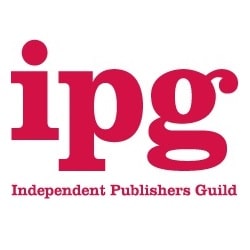
Shawn Fanning was the brains behind Napster, the peer-to-peer software through which consumers shared millions of music tracks without authorisation. Alexandra Elbakyan is the neurotechnology researcher from Kazakhstan who founded Sci-Hub. What do they have in common? Both are pioneering software developers whose projects have facilitated global copyright abuse on an industrial scale—but only one of them went legal.
If you are in the academic community, you will probably know Sci-Hub: Elbakyan’s website hosts more than 70 million research papers for direct download, bypassing journal publishers’ paywalls by obtaining access through universities’ proxies.
The problem is this: researchers depend on formal journals to publish their findings, and journals depend on payment to stay afloat. But you don’t need to have conducted a literature review to know that academics also depend on straightforward and frictionless access to peers’ papers as part of their work in the first place.
This is where the scholarly publishing community’s current offering lets us down. Because, in this fragmented marketplace of ideas—with multiple publishers, multiple business models and multiple gatekeepers, each with a different kind of digital padlock on published research—simply accessing a paper is hard work.
It’s so difficult to gain access to this research, in fact, that a recent study showed that 75% of the papers downloaded illegally from Sci-Hub at Utrecht University were actually already available legally to staff, faculty and students through their library subscription. Readers simply chose the easier path.
When we have a valuable asset like academic research, intuition often tells us to lock it down—to protect that value. But protectionism comes at great cost, penalising legitimate users and fuelling pirates like Sci-Hub.
Fanning should know. Napster kickstarted the P2P music sharing craze in 1999, and by P2P’s peak in 2005, 33 million people—one in five internet users—were using such services, according to NPD Group. Yet today, music piracy is much reduced.
It took aggressive legal action and belated digital distribution by labels to turn Napster into a legitimate service. But that was just the beginning. It was the arrival of easy-to-use software like Spotify that re-established the legality of music consumption. Now music is a growth business once again, and there is more listening than ever before.
Academic publishing needs to follow the same trajectory. Elbakyan and pirate sites like Sci-Hub should have no place in the research world, but they are giving us the signposts we need to make the correct turns. So, what should publishers learn from Fanning, Elbakyan and those like them? Here are four things to aim for.
Anywhere access
Do you listen to music or read the news in the same place every time? Of course not. So why do publishers still lock journal access to accounts that must be accessed on the premises of university libraries? The introduction of CASA and, more recently, the Universal CASA functionality, was the first step in addressing this issue, allowing researchers to access subscribed content remotely and on mobile devices. But more platforms need to be taking advantage. Complementary access-enabling support is provided by Unpayway, and will be with RA21 as well. These will all add together to get a reader to the research without stopping by Sci-Hub.
Responsive design
As consumers these days, we use the internet from our tablet, phone and laptop. Indeed, a universally available digital song collection is arguably what has saved the music industry. It is perverse that so many journal publishers still conceive of desktop consumption as the only modality. A mobile phone is, of course, not the optimum device for reading a long scholarly article. But a tablet is perfect, and readers should be given the choice.
Better search
When researchers are looking for something, they search. A journal publisher’s search engine, therefore, must be fast and responsive, and must return the most relevant content at the first time of asking. But I am amazed by how poor many publishers’ search functions are in 2018. Now that machine-learning algorithms are widely available to developers, help is on-hand to upgrade results ranking, so that more researchers find more relevant articles more quickly.
Value-adds
Considering consumption of scholarly articles is at an all-time high of more than 2.5 billion downloads per year, it is clear that readers need more than just a repository of downloadable articles with a search box. They also need better discovery tools. If Spotify were merely a ‘celestial jukebox’, it would not have hit its heights. Growth comes from offering a mixture of both expert curation and automated recommendations.
As scholarly publishing has made its transition from print to digital, the journey has only really just begun. It is still far behind other digital products like films, music and games, yet the problems faced are not dissimilar. Those other forms have seen the rise of services like Netflix, Spotify, and Xbox Live Gold—fixed-priced subscriptions giving users unlimited access to their carefully curated content through slick and easy to use interfaces with personalized discovery tools.
It is now time for journals to stand on the shoulders of giants. We need to learn from our peers and even our nemeses, like Sci-Hub. We need to look at the evidence, document what works, then improve and evolve.
After all, isn’t that what a researcher would do?